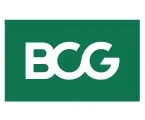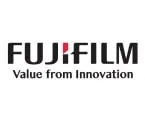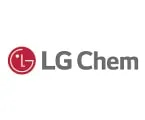Resources
About Us
Saudi Arabia Smart Cities Market Size, Share, Forecast, & Trends Analysis by Solution (Smart Citizen Services, Smart Buildings, Smart Transportation, Smart Utilities), Component (Hardware, Software, Services), Technology (IoT, Cloud Computing, Machine Learning) - Forecast to 2031
Report ID: MRSE - 1041466 Pages: 185 Mar-2025 Formats*: PDF Category: Semiconductor and Electronics Delivery: 24 to 72 Hours Download Free Sample ReportThe Saudi Arabia Smart Cities Market is projected to reach $112 billion by 2032 from $22.2 billion in 2025, growing at a CAGR of 26.1% during the forecast period of 2025-2032.
Saudi Arabia Smart Cities Market
The market is experiencing robust growth primarily driven by the ambitious Saudi Vision 2030 framework, which emphasizes urban transformation, technology adoption, and quality of life improvements across the Kingdom. Additionally, factors such as rising need for public safety and security, government initiatives for smart city development, and increasing focus on sustainability and resource optimization further expected to propel the growth of this market.
The intersection of high-speed urbanization with Vision 2030's key priorities represents a pivotal market driver, as the kingdom positions itself strategically to support population shifts while improving the livability of cities through technology-supported service delivery. Prioritization of strategic public security and safety has accelerated broad market momentum, as the large-scale rollout of advanced surveillance ecosystems and fused command centers becomes a hallmark in major metropolitan clusters. Policy paradigms formulated by governments yield the necessary regulatory foundations and funding impetus, while the accelerating emphasis on sustainability and resource maximization meets the kingdom's green imperatives via integrated smart solutions.
Even with its intriguing growth potential, the market faces a number of strategic issues that can influence its expansion rate. The high capital investment needs pose a considerable market entry obstacle, especially for smaller municipal bodies and private sector investors. Data protection and cybersecurity weaknesses are growing paramount issues as smart infrastructure collects and processes valuable personal and operational information assets. Implementation complexity is compounded by the need for legacy system integration, while the chronic shortage of talent in specialized technical fields hinders the design, deployment, and upkeep of smart city technologies. In addition, the lack of standardized data protocols among heterogeneous smart city components presents substantial interoperability limitations that hinder system-wide performance.
This study broadly segments the smart cities market in Saudi Arabia by solution, component, technology and geography. The study also evaluates industry competitors and analyzes the market at the regional and country levels.
Based on the solution, Smart Citizen Services segment holds the largest share of the overall smart cities market in Saudi Arabia, as a consequence of the government's strategic investment in public safety infrastructure, governance models, and critical service delivery in healthcare and education domains. The Smart Transportation segment is expected to grow at the highest CAGR over the forecast period of 2025-2032, fueled by massive infrastructure spends as a response to urban mobility issues and optimum optimization of transport networks over fast-growing metropolitan areas.
On the basis on component, Hardware segment leads the market because of the huge amount of capital invested in physical infrastructure assets such as sensor networks, surveillance equipment, and connectivity infrastructure. Yet, the Software segment has better growth prospects as market attention shifts toward next-generation analytics capabilities, AI-based applications, and complete management platforms that are designed to optimize return on hardware investments.
On the basis of technology, Internet of Things (IoT) expected to hold the largest share of the Saudi Arabia smart cities market, serving as the underlying architecture for most applications in smart cities through its vast network of communicating endpoints and sensors. Artificial Intelligence (AI) and Machine Learning (ML) technologies are expected to witness significant growth during the forecast period as they evolve from experimental deployments to mission-critical applications, facilitating predictive intelligence and autonomous decision-making functions throughout smart city environments.
The competitive landscape of the Saudi Arabia smart cities market is characterized by a strategic balance between international technology companies and local solution providers. Global industry leaders like Cisco Systems, IBM, Microsoft, and Huawei use their broad portfolios and international implementation capabilities, whereas local players like Saudi Telecom Company (STC), Mobily, and Elm Company use their localized market knowledge and established government connections. The market leans more and more in the direction of strategic alliance business models and ecosystem collaborations among these international and local players, which integrate international best practices with local market understanding to meet kingdom-specific needs. Public-private partnership models have become the most common implementation format, ensuring balanced risk sharing and knowledge exchange among government stakeholders and technology providers, thus speeding up market development and improving solution sustainability.
Key Players
These market players are increasingly entering into strategic partnerships to combine complementary strengths, with competitive edge coming from technological innovation, local market knowledge, and the capacity to provide integrated solutions that fit the kingdom's strategic smart city vision. The key players operating in the Saudi Arabia smart cities market are Cisco Systems, Inc., IBM Corporation, Microsoft Corporation, Siemens AG, Huawei Technologies Co., Ltd., Honeywell International Inc., Schneider Electric SE, ABB Ltd., Oracle Corporation, and SAP SE among other international and regional technology providers.
Saudi Arabia Smart Cities Market Research Summary
|
Particulars |
Details |
|
Number of Pages |
185 |
|
Format |
|
|
Forecast Period |
2025–2032 |
|
Base Year |
2024 |
|
CAGR (Value) |
26.1% |
|
Market Size (Value) |
$112 Billion by 2032 |
|
Segments |
By Solution
By Component
By Technology
|
|
Key Companies Profiled |
Cisco Systems, Inc., IBM Corporation, Microsoft Corporation, Siemens AG, Huawei Technologies Co., Ltd., Honeywell International Inc., Schneider Electric SE, ABB Ltd., Oracle Corporation, SAP SE |
The Saudi Arabia Smart Cities Market is valued at $18 billion in 2024 and is projected to reach $112 billion by 2032, growing at a CAGR of 26.1% during the forecast period of 2025-2032.
This robust growth of Saudi Arabia smart cities market is primarily driven by substantial government investments under Vision 2030 initiatives and the rapid development of mega-projects like NEOM.
Vision 2030 is fundamentally transforming Saudi Arabia's urban landscape by prioritizing technological integration and sustainability through dedicated funding mechanisms and clear policy frameworks. The initiative has established ambitious targets for smart city development, including the creation of multiple smart mega-projects (NEOM, Red Sea Project, Qiddiya), digital government services transformation, and comprehensive regulatory reforms that facilitate advanced technology adoption across both new developments and existing urban centers.
IoT sensors and connectivity solutions, AI-powered analytics platforms, and cloud computing infrastructure are experiencing the most rapid adoption in Saudi smart city implementations. Additionally, 5G network deployments are accelerating significantly to provide the necessary communication backbone, while edge computing solutions are gaining traction for applications requiring real-time processing capabilities in areas such as traffic management, public safety, and utilities monitoring.
The primary challenges in Saudi smart city implementations include high initial infrastructure investment requirements, integration complexities with existing legacy systems, and cybersecurity concerns related to critical infrastructure protection. Additionally, the development of local technical expertise and talent remains challenging despite significant educational investments, while data governance frameworks are still evolving to balance innovation with privacy considerations in a culturally sensitive context.
Public-private partnerships are accelerating smart city development in Saudi Arabia by combining government funding and policy support with private sector innovation and technical expertise. These collaborations typically involve risk-sharing arrangements where the government provides land, regulatory frameworks, and initial funding, while private entities contribute technology solutions, operational expertise, and additional investment capital, creating models that expedite project implementation while ensuring long-term sustainability through carefully structured revenue-sharing arrangements.
Smart transportation solutions (including intelligent traffic management and autonomous mobility), advanced water management systems addressing resource scarcity, and integrated public safety platforms offer the most promising investment opportunities in Saudi Arabia. Additionally, energy efficiency solutions for buildings, smart grid implementations supporting renewable integration, and citizen-centric digital government services represent high-growth segments with strong government support and clear alignment with national development priorities.
Smart city implementations in Saudi Arabia are delivering measurable sustainability outcomes including 15-20% reductions in urban energy consumption, 25-30% decreases in water usage through intelligent monitoring and leak detection, and significant carbon emissions reductions through optimized transportation systems.
1. Market Definition & Scope
1.1. Market Definition
1.2. Market Ecosystem
1.3. Currency
1.4. Key Stakeholders
2. Research Methodology
2.1. Research Approach
2.2. Process of Data Collection and Validation
2.2.1. Secondary Research
2.2.2. Primary Research/Interviews with Key Opinion Leaders from the Industry
2.3. Market Sizing and Forecast
2.3.1. Market Size Estimation Approach
2.3.1.1. Bottom-up Approach
2.3.1.2. Top-down Approach
2.3.2. Growth Forecast Approach
2.4. Assumptions for the Study
3. Executive Summary
3.1. Overview
3.2. Segmental Analysis
3.2.1. Saudi Arabia Smart Cities Market Analysis, by Solution
3.2.2. Saudi Arabia Smart Cities Market Analysis, by Component
3.2.3. Saudi Arabia Smart Cities Market Analysis, by Technology
3.3. Key Players & Competitive Scenario
4. Market Insights
4.1. Overview
4.2. Factors Affecting Market Growth
4.2.1. Drivers
4.2.1.1. Growing Urbanization and Saudi Vision 2030
4.2.1.2. Rising Need for Public Safety and Security
4.2.1.3. Government Initiatives for Smart City Development
4.2.1.4. Increasing Focus on Sustainability and Resource Optimization
4.2.2. Restraints
4.2.2.1. High Initial Investment Requirements
4.2.2.2. Privacy and Security Concerns
4.2.3. Opportunities
4.2.3.1. Integration of AI and IoT Technologies
4.2.3.2. Public-Private Partnerships for Smart City Development
4.2.3.3. 5G Implementation Across Major Cities
4.2.4. Challenges
4.2.4.1. Implementation Complexity and Integration of Legacy Systems
4.2.4.2. Skilled Workforce Shortage
4.2.4.3. Data Management and Standardization Issues
4.3. Impact of Sustainability on the Smart Cities Market in Saudi Arabia
4.3.1. Introduction
4.3.2. Regulatory Landscape and Government Initiatives
4.3.2.1. National Sustainability Frameworks
4.3.2.2. Smart City Regulatory Frameworks
4.3.2.3. NEOM and Specialized Economic Zones
4.3.3. Sustainable Investment Trends
4.3.3.1. Strategic National Priorities
4.3.3.2. Foreign Direct Investment Patterns
4.3.3.3. Project Economics and Financing Innovations
4.3.4. Technological Innovations and Implementation
4.3.4.1. Digital Twins and Integrated Urban Management
4.3.4.2. Renewable Energy and Smart Grid Technologies
4.3.4.3. Water Conservation Technologies
4.3.4.4. Mobility and Transportation Systems
4.3.5. Implementation Case Studies and Outcomes
4.3.5.1. NEOM: Sustainability at Unprecedented Scale
4.3.5.2. Riyadh: Transforming an Existing Metropolis
4.3.5.3. Red Sea Project: Sustainable Tourism Infrastructure
4.3.6. Challenges and Future Outlook
4.3.6.1. Implementation Challenges and Constraints
4.3.6.2. Future Market Outlook and Opportunities
4.3.7. Conclusion
4.4. Porter’s Five Forces Analysis
4.4.1. Bargaining Power of Suppliers
4.4.2. Bargaining Power of Buyers
4.4.3. Threat of Substitutes
4.4.4. Threat of New Entrants
4.4.5. Degree of Competition
4.5. Value Chain Analysis
4.6. Case Studies
4.6.1. NEOM
4.6.2. Riyadh Smart City
4.6.3. King Abdullah Economic City
4.6.4. Jeddah Economic City
4.7. Regulatory Analysis
4.7.1. National Transformation Program
4.7.2. ICT Strategy 2023
4.7.3. Saudi Data and AI Authority (SDAIA) Regulations
4.7.4. Saudi Vision 2030
5. Saudi Arabia Smart Cities Market Assessment—by Solution
5.1. Overview
5.2. Smart Citizen Services
5.2.1. Smart Public Safety
5.2.1.1. Surveillance
5.2.1.2. Command & Control Centers
5.2.2. Smart Governance
5.2.2.1. Smart Emergency Management
5.2.2.2. Smart Law Enforcement
5.2.2.3. E-governance
5.2.3. Smart Street Lighting
5.2.4. Smart Education
5.2.5. Smart Healthcare
5.2.5.1. Connected Healthcare Solutions
5.2.5.2. Telemedicine
5.3. Smart Environment
5.3.1. Climate Monitoring
5.3.2. Smart Waste Management
5.3.3. Air Quality Monitoring
5.3.4. Noise Mapping & Monitoring
5.4. Smart Buildings
5.4.1. Smart Buildings Market—by Solution
5.4.1.1. Smart Energy Management
5.4.1.2. Smart Facility Management
5.4.1.3. Safety and Security Management
5.4.1.4. Smart Lighting Control Systems
5.4.1.5. Elevators & Escalators Management Systems
5.4.2. Smart Buildings Market—by Type
5.4.2.1. Commercial Buildings
5.4.2.2. Public Buildings
5.4.2.3. Residential Buildings
5.5. Smart Transportation
5.5.1. Smart Transportation Market—by Solution
5.5.1.1. Smart Ticketing & Toll
5.5.1.2. Parking Management
5.5.1.3. Traffic Management
5.5.1.4. Passenger Information
5.5.1.5. Freight Information
5.5.1.6. Telematics
5.5.1.7. Other Smart Transportation Solutions
5.5.2. Smart Transportation Market—by Application
5.5.2.1. Roadways
5.5.2.2. Railways
5.5.2.3. Airways
5.5.2.4. Maritime
5.6. Smart Utilities
5.6.1. Smart Energy Management
5.6.1.1. Smart Grids
5.6.1.2. Smart Meters
5.6.1.3. Smart Energy Storage
5.6.1.4. PV Monitoring
5.6.1.5. Meter Data Management
5.6.1.6. Power Electronics Converters
5.6.1.7. Other Smart Utilities
5.6.2. Smart Water Management
5.6.3. Smart Distribution Management
5.6.4. Other Smart Cities Solutions
6. Saudi Arabia Smart Cities Market Assessment—by Component
6.1. Overview
6.2. Hardware
6.2.1. Endpoint Devices
6.2.2. Processing Devices
6.2.3. Network Devices
6.2.4. Other Devices
6.3. Software
6.3.1. IoT Device Software
6.3.2. Gateway Software
6.3.3. Cloud Software
6.3.4. Computing Device Software
6.3.5. Other Software
6.4. Services
6.4.1. Consulting Services
6.4.2. System Integration & Deployment Services
6.4.3. Infrastructure Monitoring & Management Services
6.4.4. Network Services
6.4.5. Other Services
7. Saudi Arabia Smart Cities Market Assessment—by Technology
7.1. Overview
7.2. Internet-of-Things (IoT)
7.3. Artificial Intelligence (AI)
7.4. Cloud Computing
7.5. Machine Learning (ML)
7.6. Machine-to-Machine Communications (M2M)
7.7. Other Technologies
8. Competitive Landscape
8.1. Overview
8.2. Key Growth Strategies
8.3. Competitive Benchmarking
8.4. Competitive Dashboard
8.4.1. Industry Leaders
8.4.2. Market Differentiators
8.4.3. Vanguards
8.4.4. Contemporary Stalwarts
8.5. Market Share/Ranking Analysis, by the Key Players, 2024
9. Company Profiles (Business Overview, Financial Overview, Product Portfolio, Strategic Developments, and SWOT Analysis)
9.1. International Technology Companies
9.1.1. Cisco Systems, Inc.
9.1.2. IBM Corporation
9.1.3. Microsoft Corporation
9.1.4. Siemens AG
9.1.5. Huawei Technologies Co., Ltd.
9.1.6. Honeywell International Inc.
9.1.7. Schneider Electric SE
9.1.8. ABB Ltd.
9.1.9. Oracle Corporation
9.1.10. SAP SE
9.2. Regional Technology Providers
9.2.1. Saudi Telecom Company (STC)
9.2.2. Mobily (Etihad Etisalat)
9.2.3. Advanced Electronics Company (AEC)
9.2.4. TAQNIA
9.2.5. Saudi Business Machines Ltd. (SBM)
9.2.6. Al Moammar Information Systems (MIS)
9.2.7. Elm Company
9.2.8. Saudi Technology Development and Investment Company (TAQNIA)
9.2.9. Zain KSA
9.2.10. DETASAD (Detecon Al Saudia Co. Ltd.)
(Note: SWOT Analysis will be provided for the Top 5 Companies.)
10. Appendix
10.1. Available Customization
10.2. Related Reports
List of Tables
Table 1. Saudi Arabia Smart Cities Market, by Solution, 2023-2032 (USD Million)
Table 2. Saudi Arabia Smart Citizen Services Market, by Type, 2023-2032 (USD Million)
Table 3. Saudi Arabia Smart Public Safety Market, by Type, 2023-2032 (USD Million)
Table 4. Saudi Arabia Smart Governance Market, by Type, 2023-2032 (USD Million)
Table 5. Saudi Arabia Smart Healthcare Market, by Type, 2023-2032 (USD Million)
Table 6. Saudi Arabia Smart Environment Market, by Type, 2023-2032 (USD Million)
Table 7. Saudi Arabia Smart Buildings Market, by Solution, 2023-2032 (USD Million)
Table 8. Saudi Arabia Smart Transportation Market, by Solution, 2023-2032 (USD Million)
Table 9. Saudi Arabia Smart Transportation Market, by Application, 2023-2032 (USD Million)
Table 10. Saudi Arabia Smart Utilities Market, by Solution, 2023-2032 (USD Million)
Table 11. Saudi Arabia Smart Energy Management Market, by Solution, 2023-2032 (USD Million)
Table 12. Saudi Arabia Smart Cities Market, by Component, 2023-2032 (USD Million)
Table 13. Saudi Arabia Smart Cities Hardware Market, by Type, 2023-2032 (USD Million)
Table 14. Saudi Arabia Smart Cities Software Market, by Type, 2023-2032 (USD Million)
Table 15. Saudi Arabia Smart Cities Services Market, by Type, 2023-2032 (USD Million)
Table 16. Saudi Arabia Smart Cities Market, by Technology, 2023-2032 (USD Million)
Table 17. Saudi Arabia Smart Cities Market, by Solution, 2023-2032 (USD Million)
Table 18. Saudi Arabia Smart Citizen Services Market, by Type, 2023-2032 (USD Million)
Table 19. Saudi Arabia Smart Public Safety Market, by Type, 2023-2032 (USD Million)
Table 20. Saudi Arabia Smart Governance Market, by Type, 2023-2032 (USD Million)
List of Figures
Figure 1. Saudi Arabia Smart Cities Market Ecosystem
Figure 2. Key Stakeholders in Saudi Arabia Smart Cities Market
Figure 3. Research Process
Figure 4. Secondary Sources Referenced for this Study
Figure 5. Primary Research Techniques
Figure 6. Key Executives Interviewed
Figure 7. Breakdown of Primary Interviews (Supply-side & Demand-side)
Figure 8. Market Size & Growth Forecast Approach
Figure 9. Key Insights
Figure 10. In 2024, the Smart Citizen Services Segment Expected to Dominate the Saudi Arabia Smart Cities Market
Figure 11. In 2024, the Hardware Segment Expected to Dominate the Saudi Arabia Smart Cities Market
Figure 12. In 2024, the IoT Segment Expected to Dominate the Saudi Arabia Smart Cities Market
Figure 13. Impact Analysis of Market Dynamics
Figure 14. Vendor Selection Criteria/Factors Influencing Purchase Decisions
Figure 15. Saudi Arabia Smart Cities Market, by Solution, 2024 Vs. 2032 (USD Million)
Figure 16. Saudi Arabia Smart Cities Market, by Component, 2024 Vs. 2032 (USD Million)
Figure 17. Saudi Arabia Smart Cities Market, by Technology, 2024 Vs. 2032 (USD Million)
Figure 18. Growth Strategies Adopted by Leading Market Players (2021–2024)
Figure 19. Competitive Benchmarking Analysis (2021–2024)
Figure 20. Competitive Dashboard: Saudi Arabia Smart Cities Market
























Published Date: Sep-2020
Please enter your corporate email id here to view sample report.
Subscribe to get the latest industry updates